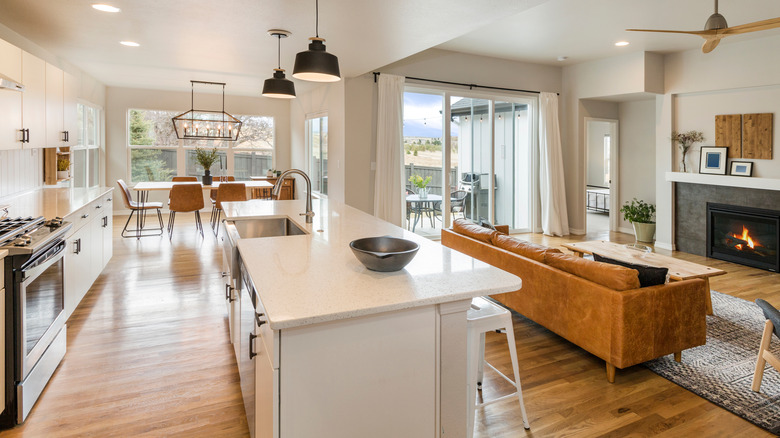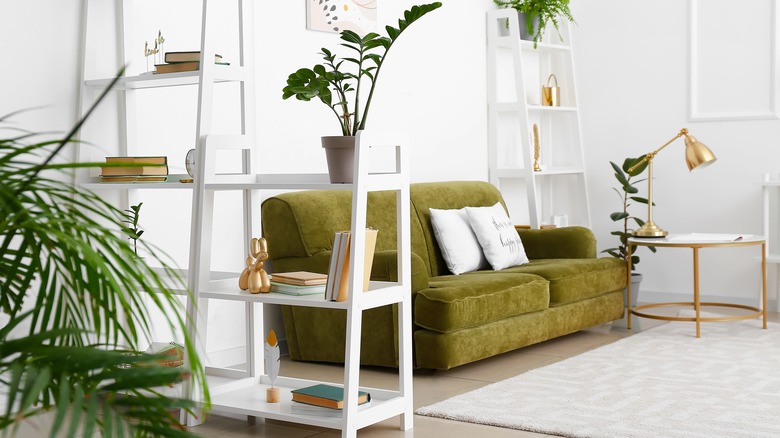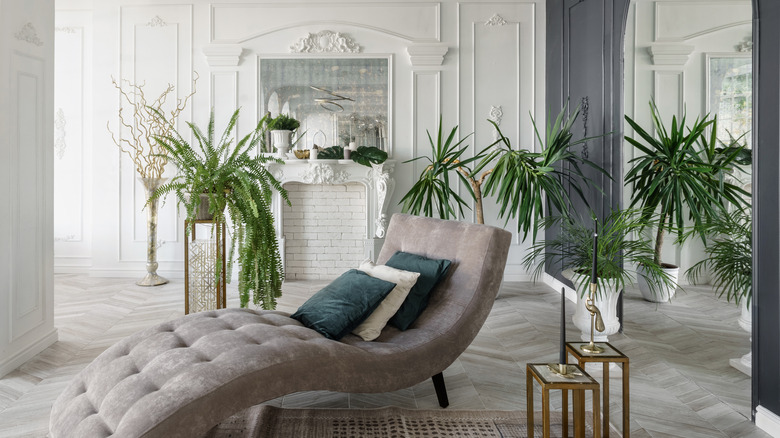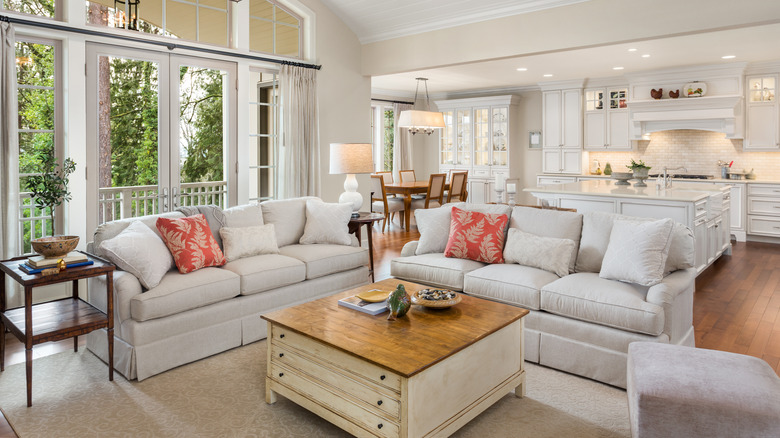3 Ideas For Walling Off A Room Without A Renovation
For years, open-concept living spaces have been sought after by many homeowners. Marketed as creating an open and airy space that's great for entertaining, newly built homes often featured a living room, dining room, and kitchen combination. And homes that didn't naturally have this were renovated to feature an open concept. But furnishing an open floor plan can be a difficult task.
While some homeowners today might be shying away from open floor plans, they aren't going away completely. Learning how to master decorating an open floor plan is a much more cost-effective option than renovation. Not everyone has the budget or the layout to add walls.
Instead, to wall off an open-concept space, identify and create zones in your home for eating, sitting, and traffic flow, suggests WRAL. For example, you can use home decor to create a makeshift wall to separate different areas of your home. Whether you have a large open living area or a small studio apartment, you can create distinct areas in your home without renovating. Here are three simple ways to do just that.
Open shelving
Using shelving is a great way to create separation, wall off your space, and provide you with functional storage. Open shelving will also look natural in the space and can fit any interior style. A floor-to-ceiling bookshelf can create separation in a living room and open shelving allows for light to pass through so no space feels like a cage. You can build shelves into the space or purchase a bookshelf to create the division.
In the kitchen, open shelving will provide extra storage for dishes and homeware, per Chloe Dominik. You can also, for example, use shelves to wall off the sleeping space from the rest of the bedroom or the rest of a studio apartment. Shelves can also serve as nightstands for the bed.
The shelving also doesn't have to be floor to ceiling. You can use low bookshelves to separate spaces from each other without losing sight lines throughout the space. Low bookshelves will give you separation while maintaining the airy feel that people love about open floor plans.
Large plants
If you're a lover of foliage and have a green thumb, then you might want to use houseplants as a divider to wall off a room. What's great is that plants are movable, so you're able to create with a configuration that works best for your space or swap out one plant for another.
Line up large plants to wall off your space. Balcony Garden Web suggests rubber plants, African figs, fishtail palms, and majesty palms as some large plants that grow between five and eight feet tall.
Make your plants look like decor by styling them cohesively. Use planters with similar color schemes or designs so that the planters feel like accents in your interior design. You may also want to use plant stands to add levels and a little bit of visual interest to your space.
When adding plants to your space, it's important to consider the light that the room gets. Some plants will also need more care than others. Be sure to keep the necessary care in mind when selecting plants for your home and how you will use them to wall off your space.
Place furniture strategically
You don't always need to purchase new pieces to create definition in your space. You can use the furniture you already have and place it strategically in and around the room. MHM Professional Staging suggests using area rugs, sofas, and colors to define your space. Area rugs are easy because once you place them down, you have set dimensions. They also make a room feel cozier and can root your interior style in the space.
Use your furniture to create boundaries and distinct areas in your home. You can use sofas to create a conversation space by positioning the piece so the back faces an adjacent living space. A combination of sofas and side tables can wall off a distinct living area even if the dining space is nearby.
Colors are a powerful tool when decorating. Have a coordinating color scheme that flows through the entire house but use distinct colors in different spaces. For example, your whole home color scheme could be green, blue, and white. All three colors can be present in each area. But the living room might use blue as its main color and the other two as accents, whereas the adjacent dining room features green with blue and white as accent colors. This will create visual separation and wall off your home's spaces while maintaining style continuity throughout.



